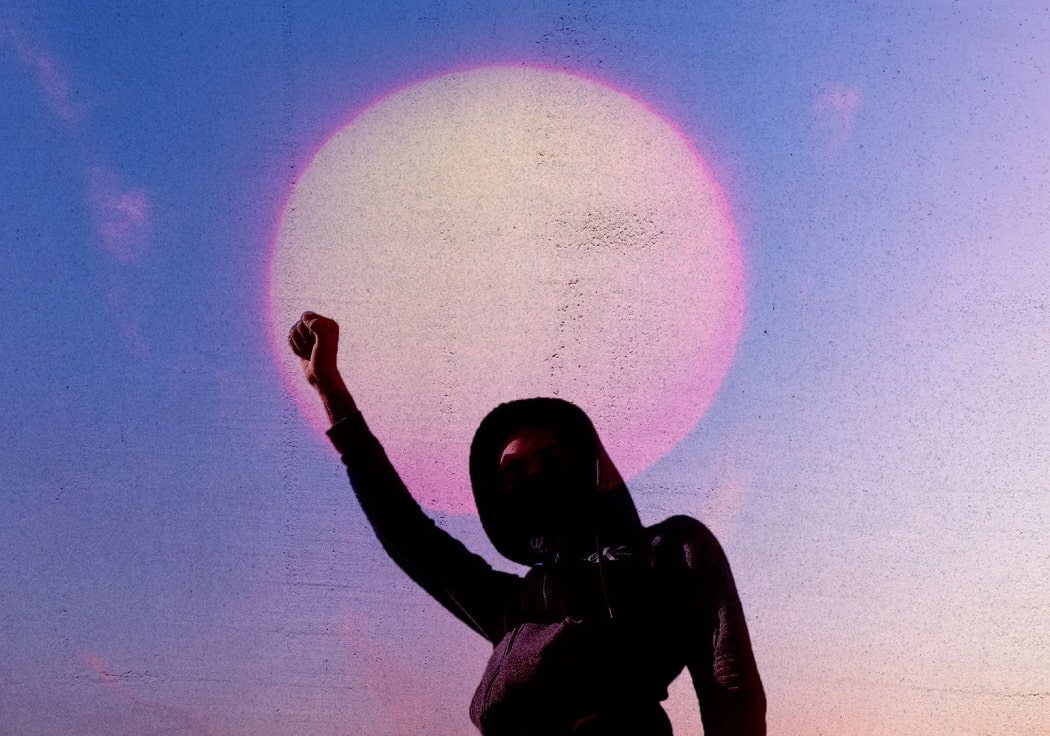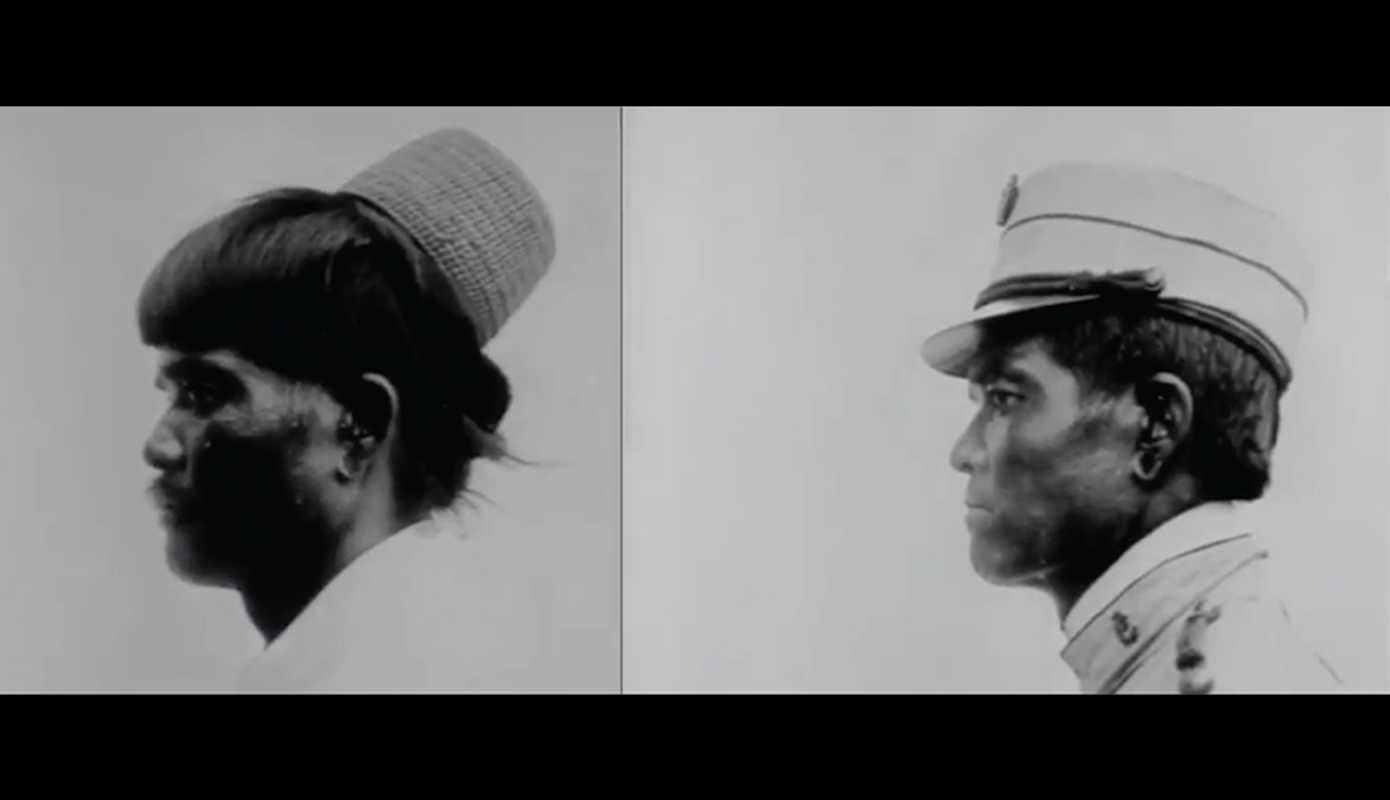In 1995 Filipino-American director Marlon Fuentes released his docu-fiction film Bontoc Eulogy. It has since become a staple film in Philippine-American studies. In the film, an unnamed narrator discovers that his great-grandfather, Markod, an Igorot from the Philippine highlands, was sent to live and perform at the St Louis World’s Fair in 1904. He lived for months in a model village for the Americans to come and gawk at him and other ‘exotic’ and ‘grotesque’ peoples from around the world. Using a mix of archival film, live-shot sequences, and images of the colonial Philippines and the Fair itself, Fuentes creates a sombre film that prods at the wounds of colonial trauma and asks: What power does the archival image have over how we view ourselves and the Other? I called Fuentes to discuss his life, his practice and the film. Below is an excerpt from that conversation.
*
My continued concerns in my film and photographic work are: perception, questioning the ethnographic gaze, considering the perceptual process – that is, the intersection of representation, culture and who has the ‘truth claim’ in terms of representing someone other than yourself. How do you ensure that you do them (your subject) justice without crossing the boundaries of appropriateness? I started work on Bontoc Eulogy in the 1990s, as part of a scholarship I had won to study at Temple University. By that time, I had already been living and working in Washington D.C. as a photographer for about 15 years. I had come to the U.S. in the 1970s, also on a scholarship but for an MBA (Masters in Business Administration) at Wharton School of the University of Pennsylvania. When I first arrived, I was suffering from PTSD. You see, in the Philippines, I was a student at the Philippine Science High School, so I was radicalised at an early age. This was the beginning of the Marcos era. I was covering rallies and protests as a photographer for our newspaper. I still remember the camera I had, an SRT Minolta 1 that I borrowed from my brother-in-law. I was at an anti-Marcos rally with my friends. All of a sudden, I heard a loud explosion. Then my black t-shirt was covered in what I thought was pig-slop. I was like, “What the hell? Who threw this firecracker and then threw this pig slop all over me?” It wasn’t until I was at the hospital later that I realised: someone had dropped a pillbox (explosive) from the top of the building onto my friend Francis’ head. It was his brains I had on my shirt. This was pre-martial law, though it was leading up to all that violence that came to define the Marcos regime. Many of my classmates, who were outspoken activists, fled to the mountains and joined the N.P.A. (New People’s Army). Many of them disappeared. The people I used to hang out with disappeared. That’s where I was coming from when I arrived in the U.S. I carried that trauma with me from Manila and translated it into my photography, shooting 8×10 surrealist work, camera-assemblages and sculptures that I photographed that are kind of totemic and fetishistic. My first body of work was images of my childhood fears. Ten years down the line, I was living like Jekyll and Hyde. I had my day job and at night I was doing my photography. I was already showing my work, but I was getting restless. You can say that my work was ‘chrono-phobic’, in the sense that I was purposefully avoiding time and duration by focusing on the still image. I had been here in the U.S. for 15 years already, and I was conflicted about whether I should go back home (to the Philippines). I found that it was still too painful. I was watching a lot of films at the National Gallery (in Washington), continuously watching between working. I became fascinated by surrealist and structuralist film and was especially taken by Russian cinema, specifically Tarkovsky. All of Tarkovsky’s films are about the passing of time and the manipulation of duration. It came head to head with my purposeful avoidance of time and Tarkovsky’s concern of solving the problem of how time is spent in cinema. His tracking shot specifically deals with this formal issue of duration. I was also interested in cultural representation and history, firstly through ethnographic film and secondly in the films of Kidlat Tahimik. Ethnographic films are such a rigorous way of looking at things. They have a certain kind of aesthetic and a distinct capture technique. The approach is very monolithic: a specific camera setup, it should be at level height with your subject, no shot-reverse-shot, quaint directives that purport to present an objective eye. One of the people who influenced my thinking while I was at Temple was a guy named Jay Ruby, an archeologist working within cultural anthropology. One of his major areas of scholarship was reflexivity in media, which taught me to question the ethnographic gaze. I began to question the way that the ‘native’ was presented in these films and the techniques through which this was done. Kidlat Tahimik’s Perfumed Nightmare was incredibly influential. I was already very literate in experimental film, but his work was unique and foregrounding. He was playing with ‘truth’ and with what makes for a reliable or unreliable narrator. His film was about the validity of narration: is the narrator as naive as he seems? Or is he actually more sophisticated than he lets on? I was fascinated by this tension. It was all these elements, Tarkovsky’s play with duration, Russian films as an investigation of memory, Kidlat Tahimik’s ambiguous narrator and my interest in challenging the norms of representation in ethnographic film that came together in the creation of Bontoc Eulogy. I then learned of the St. Louis World’s Fair in 1904 and I thought, wouldn’t it be nice if I could capture this moment in history? This event was perfect: it was the historical intersection of the Spanish-American war, the beginning of the expansion of the U.S. imperialist project, the rise of new technology such as the film camera and the moving image – this all happened at the turn of the century and the World’s Fair was an embodiment of all this! On a personal level, I saw it as a simulacrum of my experience when I landed here in Philadelphia. Markod (the Igorot brought from the Philippines to the Fair in 1904) comes to St. Louis and sees ‘civilisation’. I thought, I can identify with being a stranger in a strange land, and I can, through Markod’s eyes, consider what this ‘civilisation’ really is. Because I was a photographer working with archives, the film is also really about the photographic image, the still image. There was also the saying that “In America you can invent yourself”. This saying was my personal impetus; I wanted to create my own album, so to speak. The Filipino identity is a patchwork of sorts, a hybridised amalgamation of multiple layers; given our long history of being colonised we are constantly trying to make a whole image from fragmented parts. I decided to explore this through making the film. I use a lot of archival images, mainly from the Smithsonian Institute and the National archives in Washington D.C. The film is very much about ‘salvaged film’: resurrecting a spent relic, that has lost its power by being disassociated from its source, and revitalising it in a new configuration. I appropriated a lot of these archival images to fit my own narrative needs. I use, for example, propaganda films shot by Thomas Edison’s production house: Battle of Manila Bay and Rout of the Filipinos. These films were crafted to serve American imperialist interests and here I am repurposing them to tell the story of those they colonised. There is an inversion of archeological proof. The order is changed, but the picture makes sense! I think that art should take into account gaps (sometimes intentional gaps) in information in a brutally honest way, such as with Philippine history and identity, and incorporate this into the narrative. This was a concern of mine with my film. In a way, it is an old agenda: how do you show ‘truth’ by telling ‘lies’? How do you work with information of dubious quality, which is often the case with archival images, in order to show a greater truth? Bontoc Eulogy will be screened at Genesis Cinema, Whitechapel on the 30th of January 2018 at 7.15pm. It is presented by FILIKINO, and event dedicated to showcasing classic and contemporary Filipino film. For more information and to book your tickets follow click here. For more information on FILIKINO follow us on Facebook, or email us: filikino.event@gmail.com



